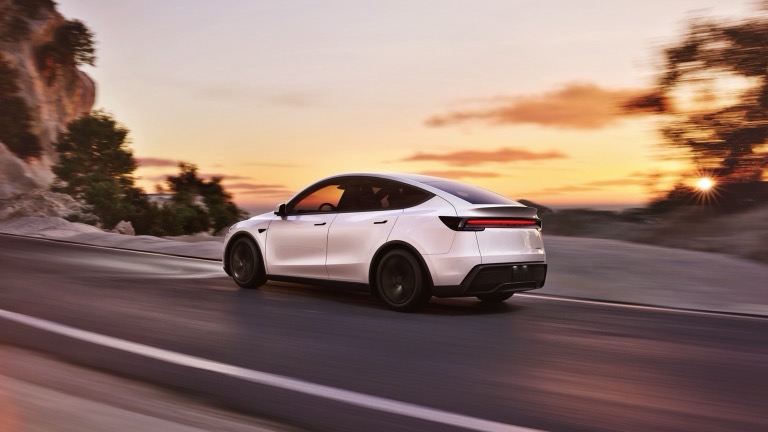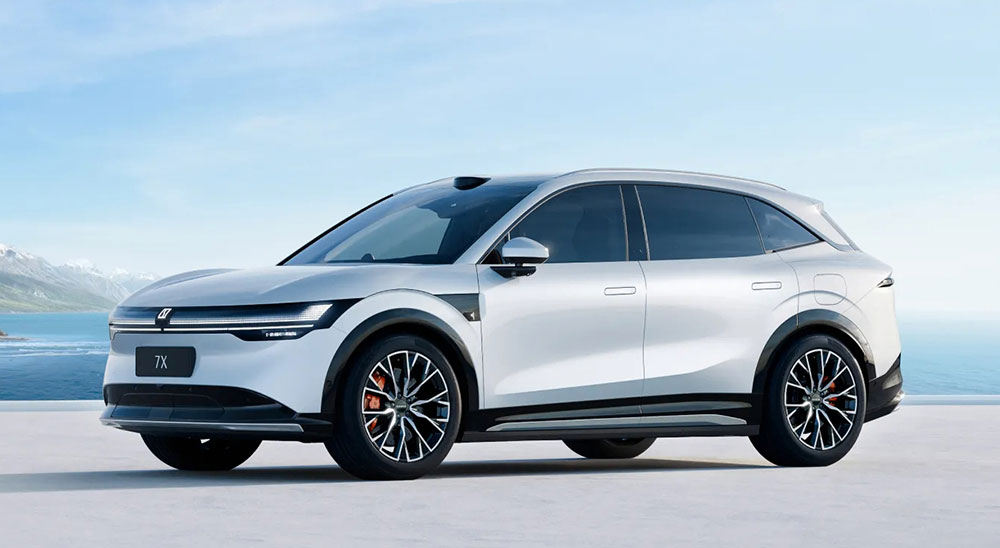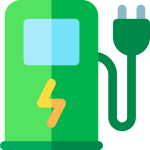
The medium SUV segment remains the battleground of Australia’s electric-vehicle market, and the 2025 Zeekr 7X arrives determined to upset Tesla’s long-running dominance with the Model Y. Zeekr’s newcomer, produced under the Geely umbrella and developed with technical input from Volvo and Polestar engineers, presents a closely aligned package to the Model Y on size and intent, but brings its own set of strengths – competitive pricing, an 800‑volt architecture, generous warranty and towing capability among them.
This comparison unpacks the key differences that matter to Australian buyers – price and ownership cost, range and charging, performance, interior space, technology and safety – and offers a practical assessment of which vehicle is likely to suit different types of buyers ahead of local deliveries for the Zeekr 7X (expected from October 2025).
Price and ownership: a close fight, with a launch advantage to Zeekr
Zeekr has priced the 7X to challenge the Model Y directly. At launch (and subject to change), the 7X RWD starts from $57,900 plus on‑road costs, slightly undercutting the Tesla Model Y RWD’s listed $58,900. Converting to typical Victorian private‑buyer driveaway figures narrows the gap: around $63,977 for the 7X RWD versus $64,373 for the Model Y RWD – a marginal saving for Zeekr buyers once registration, stamp duty and dealer delivery are included.
The Zeekr 7X Long Range RWD (single motor) and the Model Y Long Range AWD are not strict one‑to‑one rivals because Tesla’s long‑range variant is dual‑motor and tuned for higher on‑road performance. Nevertheless, Zeekr’s Long Range pricing from $63,900 plus ORCs ($70,229 driveaway in our example) undercuts the Model Y Long Range’s MSRPs, while the Zeekr Performance AWD channels a performance halo at $72,900 plus ORCs – competitive against recent Tesla Performance pricing. Zeekr has sweetened early orders with premium paint and cabin colour options at no extra cost and bundles charging cables into the price as part of a launch window that runs until at least 30 September 2025; Tesla continues to charge separately for some paint choices and charging accessories.
What this means for buyers: the 7X’s headline pricing and initial inclusions make it a compelling value proposition on paper. However, prospective owners should compare driveaway offers, option packs and prospective incentives at the state level (stamp duty concessions or registration rebates vary across Australia). Also check dealer availability, lead times and any fleet or corporate discounts that might apply.

Warranty, servicing and running costs
Zeekr offers a five‑year, unlimited‑kilometre vehicle warranty for the 7X – an attractive claim against Tesla’s four‑year/80,000km vehicle warranty in Australia. Battery coverage for the 7X is offered separately under an eight‑year/160,000km warranty, in line with common industry practice. Tesla’s battery warranty terms vary by model and, for the Model Y Long Range AWD, extend to 192,000km; Tesla guarantees a minimum 70 per cent battery capacity retention for its covered period. Zeekr has not formally published a guaranteed retention percentage for Australia at launch, though some European materials reference modest degradation after a number of cycles.
Zeekr has published a recommended service cadence of 12 months or 20,000km. Tesla does not publish fixed service intervals, preferring condition‑based prompts and on‑demand service notifications via the vehicle; this can make direct ownership‑cost comparisons more complex. Prospective buyers should budget for consumables, tyre replacement and any subscription services (navigation/streaming/driver aids) when evaluating total cost of ownership.
Range, battery chemistry and charging: where architecture matters
The 7X is notable for its 800‑volt electrical architecture – a high‑voltage design that enables very high‑rate DC charging in theory. Zeekr’s RWD model uses a 75kWh LFP (lithium iron phosphate) pack, and the Long Range and Performance variants use a 100kWh NMC (nickel‑manganese‑cobalt) pack. Zeekr quotes WLTP target ranges of about 480km for the RWD and up to 615km for the Long Range RWD; the Performance AWD claims roughly 543km WLTP. Those figures will vary in real‑world Australian conditions depending on speed, temperature, load and wheel choice.
Tesla’s Model Y is lighter and uses a lower‑voltage (400V) system. Published WLTP figures put the Model Y RWD at about 466km and the Long Range AWD at around 600km. The Model Y has traditionally used LFP chemistry on standard‑range variants and NMC on long‑range models; capacities quoted in the market have ranged (reportedly) from ~60kWh for short‑range LFP packs to ~75kWh for long‑range NMC packs.
Charging behaviour is a practical area of difference. The Zeekr 7X claims very rapid DC charging capability on paper – the 800V architecture supporting theoretical peaks well in excess of most Australian chargers – and quoted times such as 10-80 per cent in the low teens of minutes under ultra‑fast conditions. In Australia, however, most public DC chargers top out at around 150-350kW; very few (if any) public sites support the extreme 360-450kW rates Zeekr cites, so expect real‑world charging to be constrained by available infrastructure as much as vehicle capability.
Tesla’s advantage is its extensive Supercharger network in Australia, which remains the most reliable proprietary fast‑charging ecosystem in the country and simplifies long‑distance travel for Model Y owners. For home and AC charging, Zeekr’s claimed 22kW three‑phase on‑board charger is quicker than the Model Y’s common 11kW single‑phase capability – meaning a Zeekr with access to a three‑phase home or workplace charger can replenish overnight faster than a Model Y on comparable infrastructure.
Performance, weight and driving dynamics
Zeekr’s single‑motor 7X models produce a manufacturer‑quoted 310kW/440Nm, with the Performance AWD rising to 475kW/710Nm and a 0-100km/h time of around 3.8 seconds despite a curb mass near 2.46 tonnes. Those outputs are generous, but the 7X’s weight is a notable characteristic: all variants are substantially heavier than the Model Y equivalents, which affects agility, tyre wear and real‑world efficiency.
Tesla does not publish motor outputs in its marketing, but reporting and independent tests place the Model Y RWD at roughly 255kW/450Nm with a 0-100km/h time around 5.9 seconds, and the Long Range AWD closer to 330kW combined, accelerating in the mid‑4‑second bracket. The Model Y’s lighter mass (generally below two tonnes for long‑range versions) contributes to its brisk real‑world performance and nimble feel.
On the road, expect the Zeekr to deliver a composed, comfortable ride – the Performance spec also brings active air suspension and continuous damping that tune comfort and body control. The Model Y, with its revised 2025 suspension updates, remains a benchmark for directness and driver feedback in the class.
Space, practicality and towing
Dimensionally the two SUVs sit very close. The 7X is marginally shorter on paper but a touch wider and taller than the Model Y. Wheelbase figures are essentially neck‑and‑neck, and both cabins feel roomy for adults front and rear.
Differences that translate into everyday practicality:
- Boot and cargo: Tesla’s frunk (about 116L) and large boot measured to the roof give the Model Y an advantage in quoted cargo volume (around 822L behind the second row to the roof), rising to roughly 2022L with seats folded. Zeekr’s 7X offers around 539L behind the second row to the top of the seat and up to 1978L with seats down, plus a smaller RWD frunk (about 62L).
- Rear legroom: Zeekr quotes generous rear legroom figures, which may favour taller passengers on longer journeys.
- Towing: Zeekr’s 2000kg braked towing capacity is a clear practical advantage over the Model Y’s roughly 1588kg limit – a meaningful point for buyers who plan to tow caravans, trailers or boats.
Technology, infotainment and user interface
Both cars are technologically mature, but the user experience takes a different tack. Tesla’s minimalist cabin places most functions under the 15.4‑inch central screen, which some drivers appreciate for its simplicity and others find intrusive because functions normally handled by physical controls are touchscreen‑dependent. The Model Y now offers an upgraded rear entertainment screen for passengers in the 2025 refresh.
Zeekr dials a more conventional approach: a large central touchscreen (16‑inch), plus a 13‑inch digital instrument cluster, tactile switchgear and physical controls, giving a more traditional and arguably user‑friendly interface. Zeekr also includes a large head‑up display on higher grades, and higher‑spec audio systems (up to 21 speakers on top trims) that rival Tesla’s offerings.
Both vehicles support OTA updates and connected services; Tesla’s integrated Supercharger access and app ecosystem remain strengths. Zeekr’s early buyers should evaluate the intended subscription features and the length of included connectivity services (Zeekr includes standard connected services for five years at launch).
Safety and driver assistance
Safety is a core part of both propositions. The Zeekr 7X achieved a five‑star result under Euro NCAP in 2025, with strong scores across adult and child occupant protection and Safety Assist categories. The Tesla Model Y has also achieved five‑star ratings under earlier protocols and continues to offer an extensive suite of active safety and driver aids.
Both cars come standard with multiple airbags and advanced driver assistance systems (autonomous emergency braking, lane‑keep assist, adaptive cruise control and more). Tesla’s optional Enhanced Autopilot and Full Self‑Driving packages remain among the most advanced semi‑autonomous feature sets in market – albeit they require ongoing driver supervision and are subject to regulatory and functional limitations in Australia. Zeekr offers automatic parking and other driver assists as standard on higher grades.
Brand, dealer support and residuals: a key consideration
Zeekr is a relative newcomer in Australia and international markets, but it’s backed by Geely – a global automotive group that also owns Volvo, Polestar and Lotus. That pedigree brings engineering resources and economies of scale, but Australia’s Zeekr network and aftersales footprint will still be in its early stage compared with Tesla’s established Supercharger presence and service network in major urban areas.
For many buyers the strength of a brand’s population of vehicles, dealer support, recall responsiveness and resale values will influence the purchase decision as much as headline specs. Historically, Tesla has enjoyed strong demand and solid residuals in the Australian EV market, while new entrants typically face an initial period of establishing brand confidence and a local service infrastructure. Zeekr’s long warranty and competitive specification mitigate some risk, but prospective buyers should confirm local service arrangements, roadside assistance and parts availability before committing.
Who should buy which car?
- Buy a Zeekr 7X if: you prioritise value for money, want higher towing capacity, prefer a more conventional and tactile cabin layout, want faster three‑phase AC charging capability at home or work, and value a more generous factory warranty. The 7X also appeals if WLTP range figures and 800‑volt charging potential are priorities in your purchase calculus.
- Buy a Tesla Model Y if: you value a lighter, more efficient vehicle with proven on‑road dynamics, want access to Tesla’s Supercharger network and broad brand support across Australia, or prefer the unique Tesla ecosystem (apps, mapping and established resale performance).
Conclusion
The 2025 Zeekr 7X is the most credible challenger yet to the Tesla Model Y in Australia’s mid‑sized electric SUV class. It combines strong specifications, an aggressive launch price and practical advantages such as towing capacity, three‑phase AC charging and a long factory warranty. Tesla’s Model Y, however, still holds important advantages: a lighter, efficient package with established on‑road performance, an extensive fast‑charging network and a mature ownership ecosystem.
For Australian buyers the right choice will depend on priorities: Zeekr’s initial offers mean it could represent better value and capability on paper, but Model Y buyers benefit from a proven network and established resale history. If you are contemplating either vehicle, test drive both with the exact configurations you plan to buy, check local driveaway pricing and delivery timelines, confirm dealer service coverage in your area and factor in any state incentives that might apply.
FAQs
How much does the Zeekr 7X cost compared to the Tesla Model Y in Australia?
At launch, the Zeekr 7X RWD lists slightly below the Tesla Model Y RWD (Zeekr from $57,900 plus ORCs vs Model Y from $58,900), with driveaway differences depending on state charges and dealer offers. Zeekr’s early launch incentives (premium paint and cabin options, charging cables) narrow the gap further; always compare updated driveaway quotes from both brands.
What warranty does the Zeekr 7X have?
Zeekr offers a five‑year, unlimited‑kilometre vehicle warranty in Australia, with an eight‑year/160,000km battery warranty. Tesla’s Model Y comes with a four‑year/80,000km vehicle warranty (battery warranty terms vary by model and may offer longer distance limits).
Which car has the better range and charging performance?
WLTP figures put the Zeekr 7X Long Range at the top of the class on paper (claimed up to about 615km), with the Model Y Long Range around 600km. Zeekr’s 800V architecture allows faster theoretical DC charging peaks, but Australian public chargers rarely reach the maximum rates Zeekr quotes. Tesla’s practical advantage is its Supercharger network and reliable fast‑charging availability across the country.
Is the Zeekr 7X safer than the Model Y?
Both models achieve five‑star crash‑test ratings under relevant European/ANCAP protocols. The Zeekr 7X scored well in Euro NCAP testing in 2025, and the Model Y has a strong safety record from previous tests. Both offer a comprehensive suite of active safety and driver assistance features.
Which car is better for towing?
Zeekr 7X offers a 2000kg braked towing capacity, significantly higher than the Model Y’s approximately 1588kg limit. If towing is a priority, the 7X is the stronger option.
How do servicing and ownership costs compare?
Zeekr publishes a 12‑month or 20,000km service interval and includes a five‑year vehicle warranty. Tesla’s approach is less prescriptive on service intervals but has a broad service and charging network. Total ownership costs depend on state incentives, electricity prices, insurance, tyre wear and individual use; prospective buyers should obtain service price estimates from local dealers.
Should I wait to see real‑world Zeekr ownership data before buying?
If you prioritise a proven track record and extensive local support, waiting for early owner feedback and long‑term reliability data is prudent. If the Zeekr’s combination of warranty, specification and initial pricing aligns with your needs, and you’re comfortable with a newer brand backed by a major automotive group, early adoption could be justified.
About EV Evolution
EV Evolution is the leading online platform dedicated to Australian electric vehicle owners and enthusiasts. We foster a vibrant community, delivering essential EV news and insights, and enhancing user engagement through our innovative, AI-powered chatbot for dynamic discussions. Our mission is to empower Australian electric vehicle owners and enthusiasts by fostering a vibrant, AI-driven online community that connects, informs, and advances the nation’s electric vehicle landscape.




